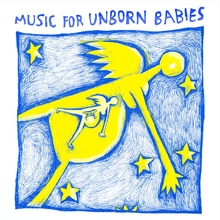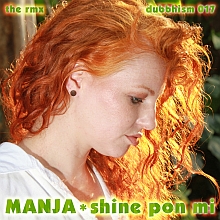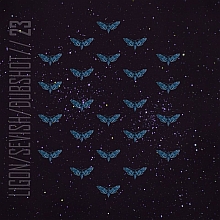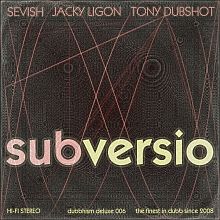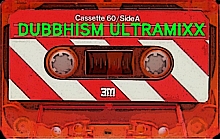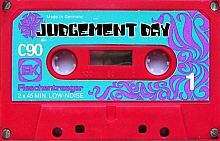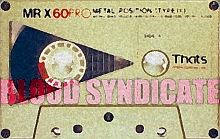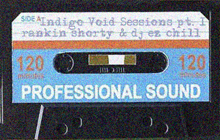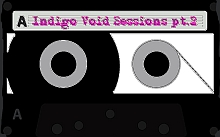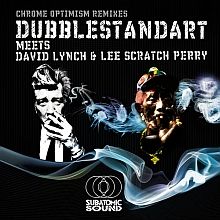
On December 9th 1964, John Coltrane recorded his masterpiece A Love Supreme in Rudy van Gelder's studio in Englewood Cliffs. Astrologically speaking, that session took place in the eye of a musical storm. So let's take a closer look at the astrological 'weather' during legendary sessions led by Coltrane, Mingus and Miles Davis.
Sometimes, the peak moments from the history of jazz seem to be in sync with the astrological weather conditions. When A Love Surpreme was recorded, various planetary conjunctions were happening at the same time and the most significant ones were exact on the 9th and 10th of December: the two days spent in the studio. In the case of A Love Supreme, it all makes a lot of sense. But the musical peak experiences of the 'cosmic session leader in the sky' are not always aligned perfectly with the opinions of jazz fans and critics. Like Charles Mingus once said: "God has a funny soul, he plays like Bird."
Kind of Blue?
For example, everybody loves Kind of Blue by Miles Davis. Surely, there must have been something very special going on during those sessions, right? Perhaps not. If you check out the documentary about the making of the album, and hear the comments of the musicians, it seems like it was business as usual on those two sessions. Kind of Blue is an amazing, perfect album, but it is also very accessible. Bitches Brew is a different story. From an astrological perspective, those three days in the same CBS studio are more significant.
Charles Mingus ~ The Black Saint and the Sinner Lady

The Black Saint and the Sinner Lady is an album/composition by Charles Mingus. The liner notes were written by the composer and his shrink. After a few pages of these explanatory notes, Mingus finally admits that he is a proud father: "I feel no need to explain any further the music herewith other than to say throw all other records of mine away except maybe one other." The album was recorded in New York on the 20th of January, 1963. What was the sky saying?
Sun conjunct Mercury; exact at noon
Asteroid 173032 Mingus conjunct Sun and Mercury (0°98)
Venus square Jupiter (0°05)
Venus square Pluto (1°02)
Jupiter opposite Pluto (0°57)
T-square: Jupiter ~ Venus ~ Pluto
Venus sextile Saturn (0°42)
Interpretation
Sun conjunct Mercury is an aspect that can be linked to mental illness (a fried mind) but when it's exact it can bestow genius and brilliance. The Mingus-asteroid conjunction is a bit like a little personal message from the cosmic session leader in the sky. Venus square Jupiter can point to excess and hedonism, but it also gives the ability to experience a pure, uninhibited kind of joy. Venus square Pluto signifies intense feelings, and possibly manipulative games. A confusing mix of love, hate and power struggles creating a labyrinth of strong emotions. Jupiter opposite Pluto is a strong, and fairly complex aspect. It may express itself in the form of great optimism and resourcefulness, strong ambition, charismatic leadership and 'larger than life' visions and great achievements. Or it may even be related to the questioning of social ideologies, and correcting social injustice. Together, Jupiter, Venus and Pluto form an aspect pattern known as a T-square. A T-square is about obstacles and the need to overcome them, usually accompanied by the drive that is necessary to do this. Tension and conflict are to be expected. Finally, the stabilizing Venus sextile Saturn-aspect is simply great for making music. It gives concrete form and skill to creative, artistic ideas.
Miles Davis ~ E.S.P.

Mercury conjunct Venus (0°39)
Jupiter trine Pluto (0°14)
Jupiter trine Uranus (1°52)
Jupiter sextile Chiron (0°41)
Pluto opposite Chiron (0°27)
Uranus opposite Chiron (1°11)
Uranus conjunct Pluto (1°39)
Interpretation
The album title has a double meaning. It can refer to a mode of communication, and also, ironically, ESP was the name of a free jazz record label. In a musical sense, the title suggests a transition from traditional structure to a higher level of musical abstraction, relying much more on improvisation ("I don't want to play chords anymore").
Mercury is about communication, but the Mercury-Venus conjunction doesn't point to telepathy. Instead, it suggests charm, harmony, a refined artistic mood and poetic self-expression. Jupiter trine Pluto on the other hand, is an inspiring, powerful aspect that can produce the synchronicities needed to 'pave the way'. Jupiter trine Uranus clearly signifies a major breakthrough, and reinventing oneself. Jupiter sextile Chiron is positive: moving forward through learning, spirituality, or through meditative (musical) experiences. There are two less specific, more generational Chiron-aspects. The opposition with Pluto suggests deep, initiatory experiences, producing a healing by revolution. Chiron opposite Uranus suggests giving birth to something completely new, while maintaining respect for the old. The Uranus-Pluto conjunction is also a long-term aspect that works on a collective level: it relates to the characteristics of the sixties.
Miles Davis ~ Bitches Brew

Bitches Brew was recorded in New York in the CBS 30th Street Studio, from August 19th to 21st, 1969. Bitches Brew is a controversial album, especially in the eyes of purist jazz fans, but it was also a commercial succes that kickstarted a new genre: jazz rock. Producer Teo Macero used various dub-techniques while editing the album. Here's what the sky looked like on the first day of the recordings:
Sun trine Galactic Center (0°09)
Sun square Neptune (0°18)
Jupiter opposite Chiron (0°27)
Mars trine Eris; exact at 16:00 in the afternoon of the first day.
Mercury sextile Venus (0°55)
Asteroid 5892 Miles opposite Venus (1°17)
Interpretation
Sun trine Galactic Center points to a steady flow of inspiration coming directly from the Source. The Voice of God whispers in the ear of the musical prophet. Sun square Neptune says it's difficult to get a clear picture of where the music is going to go next, adding to the 'searching' quality of the music. This aspect may also have fuelled the need to create an extraordinary work of art. Jupiter opposite Chiron is an invitation to go on a painful, mind-expanding journey; a quest for truth and meaning. It can signify a time to review long-held beliefs, a time to take a stand against old teachers and mentors, or a time to experiment in order to find a new, individual path.
In Greek mythology, Eris is the original Bitch. She is the goddess of strife and discord, the uninvited guest who curses the party. Eris trine Mars makes it very easy to start a war. This aspect points to the 'fight' that happened between Miles Davis and Teo Macero just before the first session started; a psychological trick Davis used to create a mood in the studio. (MD: "Come on out! Come on out! I'm going to get you! I'm going to kill you!" TM: "You make me sick, if i come out i'm going to throw up all over you!" etc. etc.) Mercury sextile Venus balances the influence of Eris and Mars with some grace. This is a good aspect for making music. The asteroid named after Miles Davis is opposite Venus. More conservative Miles-fans were quite unhappy with the new electronic sound.
John Coltrane ~ A Love Supreme

The tracks appearing on the original release of A Love Supreme were recorded on December 9th 1964, but the recording session actually continued on the 10th. The recordings that were made on the 10th are included in the 2002 Deluxe Edition. Here's a short summary of what the heavens looked like on those two memorable days:
Venus conjunct Neptune; exact at 5:00 in the morning on the 10th.
Venus opposite Jupiter; exact at noon on the 9th.
Neptune opposite Jupiter (0°52)
Mars conjunct Pluto; exact at 13:00 in the afternoon on the 10th.
Mars conjunct Uranus (1°13)
Jupiter trine Mars (1°45) and Pluto (1°28)
Sun square Mars (1°44) and Pluto (1°27)
Uranus conjunct Pluto (1°31)
Uranus opposite Chiron (0°32)
Interpretation
The basic theme of Venus conjunct Neptune is the spiritualization of love. Other characteristics include heightened artistic sentitivity, creativity and imagination. Venus opposite Jupiter can signify a lack of moderation (overdoing it) when it comes to generosity, bigheartedness and spreading the love. In the same way, Neptune opposite Jupiter suggests strong religious experiences and mysticism. Mars conjunct Pluto relates to strong desires, persistence and determination. This aspect is about committing completely to a goal, and the ability to confront high pressure, it can be emotional and physically intense. Mars conjuct Uranus is an independent, energetic and disruptive aspect that wants freedom of action. It can signify experiments, the cutting edge, leading the way by breaking the rules. Meanwhile, Mars and Pluto are trining Jupiter, indicating a strong flow of physical energy and exuberance, which is amplified by Sun square Mars; an aspect suggesting a combination of abundant physical energy and impulsive action. Sun square Pluto may express dissatisfaction with creative accomplishments, leading to high pressure, combined with an urge to express oneself. Finally, the Uranus-Pluto conjunction works on a long-term collective level: it relates to the characteristics of the era known as the sixties.
John Coltrane ~ Interstellar Space

Interstellar Space was released in 1974. It's an extended duet suite in four parts with drummer Rashied Ali. The album was recorded at the Van Gelder Studio in Englewood Cliffs on February 22nd, 1967. The titles of the tracks are Venus, Mars, Jupiter and Saturn. It was Coltrane's last recording session, five months before his death.
Venus conjunct Saturn; exact at 3:00 in the morning on the 23rd
Venus square Galactic Center (1°47)
Saturn square Galactic Center (2°29)
Neptune trine Chiron; exact on the 22nd.
Neptune trine Jupiter (1°14)
Jupiter trine Chiron (1°14)
Uranus opposite Chiron (1°09)
Neptune sextile Uranus (1°09)
Jupiter sextile Uranus (2°23)
Grand Trine/Kite: Jupiter ~ Neptune ~ Chiron ~ Uranus
Sun trine Mars (1°07)
Sun conjunct Fortuna (0°36)
Mercury opposite Pluto (1°0)
Asteroid 5893 Coltrane conjunct Sun (1°92)
Interpretation
If you have read Astrology and music: how planets and musicians interact, you may remember that John Coltrane's Golden Aspects picture him as fairly Saturnian. This makes the Venus-Saturn conjunction slightly more personal for him. Venus conjunct Saturn seamlessly blends artistic form and substance. The activation of the Galactic Center adds divine inspiration, coming straight from the Source. The Galactic Center might point to Interstellar Space.
Jupiter, Neptune and Chiron form a so-called Grand Trine. A triangular shape, producing a stable, harmonious flow of healing and spiritual energies, just waiting to be tapped by JC in his last Promethean effort. The long-term opposition between Uranus (related to the spirit of free jazz) and Chiron (wounded healer and builder of bridges) opens the gate, releasing the kind of energy that will help to make Coltrane's approach to free jazz more acceptable for the mainstream. The resulting 4-planet aspect pattern is a Kite.
Sun trine Mars adds an extra dose of energy and confidence: ready for anything. Mercury opposite Pluto creates mental focus and depth of thought, but also tension and an obsessive need to dig deeper.
In hindsight, Sun conjunct Fortuna reminds us that the wheel of life goes around in cycles: there's up and down. Coltrane's music will be remembered, but after this last session his recording career is over. Asteroid Coltrane reminds us that Coltrane really owned these days.


